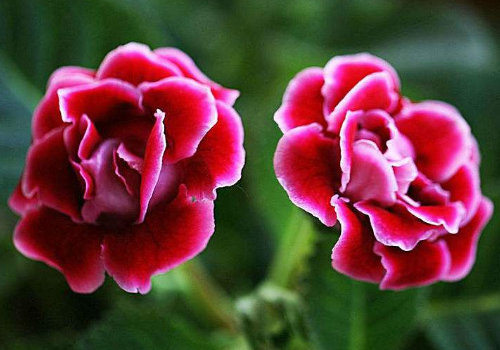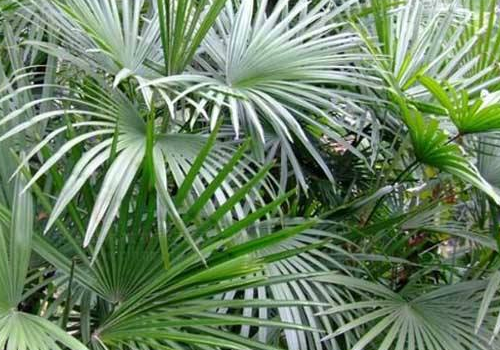Can paulownia be cultured in aquaculture? what if the ball is rotten?
Paulownia has a high ornamental value, and the flowers are also very beautiful. Can paulownia be cultured in water? What if the ball sucks:
Can paulownia be cultured in water?
Paulownia can be cultured in water. Paulownia is a perennial herb of the family Gesneriaceae. Its tuber is oblate, the aboveground stem is very short, the plant height can reach 25 cm, and the whole plant is densely white tomentose. Leaves opposite, thick, serrated; flowers terminal or axillary, Corolla bell-shaped, pink, red, purplish blue, white, complex color and other colors, large and beautiful. Capsule, flowering from March to August, blooming in summer.

What should I do if the big Yantong rotten ball?
1. Dig up the rotten ball, then wash it clean, remove the rotten root system first, and pay attention to pulling it off directly.
2. Use a sharp knife to cut off the rotten part of the bulb until the healthy part of the ball appears, so as to avoid the expansion of the infection range of the bulb and make it continue to rot.
3. Put the rotten and cleaned bulbs under the sun for drying. It usually takes about an hour to dry the wound, but be careful not to let the bulbs get dehydrated.
4. Put carbendazim on the bulb for disinfection.
5. To replant the treated bulbs, you first need a true quilt medium, which can prepare clean water moss or vermiculite, river sand, etc., but it is better to use water moss, which can twist dry and control humidity.
6. Bury the bulb in half with prepared water moss or soil, and be careful not to bury the wound. Then use a transparent container to suffocate it, pay attention to the humidity of the air in the container is not too high, otherwise it is easy to rot.
You know how to deal with the rotten balls of paulownia.
The introduction of the method of hydroponic culture of paulownia and the transplanting treatment method after hydroponic culture.
When it comes to paulownia, many flower friends in the north may not know much about it, but they are very familiar with flowers in the south. It is a very good indoor flowering plant, generally many families will choose the method of soil culture, in fact, it can also be hydroponic. Today, I will take you to understand the hydroponic culture method of paulownia.
Hydroponic method
1. The period of water insertion
Cutting from May to June or August to September is more suitable, if it is in the greenhouse or at home, the temperature is higher, it can be carried out all the year round. The temperature is 20-28 ℃, and 25 ℃ is better for rooting. If the temperature is too low, the rooting time will be prolonged.
two。 Water-filled container
You can use watertight, non-toxic and tasteless plastic bottles or glass products. It is best to scald the water with hot water before inserting it for sterilization.
3. Selection of cuttings
After tuber planting, several buds can be produced after a period of growth. When growing to 2mur3 pairs of leaves, two stems are left to blossom, the rest of the tender stems can be broken off, and the lower pair of leaves can be removed without cutting and can be used as cuttings directly. The sturdy and tender stem can also be cut off. The top tip is 5mi 8cm long, and the lower part of the stem is 5mm away from the node with a sharp shearing. Cut flat or obliquely, remove the lower leaves and make cuttings. Take the leaves of the middle and lower parts of the plant that are fat and stout without excessive aging, and carefully break them off from the base of the petiole to make cuttings.
4. The steps of water insertion
Leave the ordinary tap water for 1 or 2 days, pour it into the container, then insert the cuttings into the water, the leaves are exposed to the container, and the petiole and lower rhizome are immersed in water, about 1.5ml 2cm. If the cuttings are few and the container is too deep and large, you can use a foam sheet to dig a small hole, insert the lower part of the cuttings, and then float it on the surface. After water insertion, put the container in the place where the scattered sunlight is absorbed, change the water once in two or three days, give birth to white adventitious roots in about ten days, and give birth to tubers in about twenty days, after which you can continue to insert water or transplant.
Two planting methods after adventitious roots
1. Rooting and transplanting method
When the cuttings produced 5-6 adventitious roots and transplanted to a 10-cm flowerpot and placed in a semi-shade condition to keep the soil moist and a certain amount of air humidity, the lower part of the leaves would soon grow flat bulbous tubers, and then the original leaves wilted, and new buds could be produced at the top of the corm. After careful management, it could bloom after 5 months.
two。 Raw ball transplanting method
Cuttings produce adventitious roots and continue to be cut in water until a flat globular tuber about 1 cm in diameter is produced and then transplanted into a flowerpot.
Matters needing attention
1. During the long ball period, the sun should not be too strong, otherwise the tuber will turn green and gradually crack, affecting the growth and flowering. It is usually placed in a semi-shaded place, or a piece of Kraft paper or black paper can be wrapped in the container to block the light.
2. Planting should not be too late, otherwise it is easy to cause malnutrition and affect the sprouting and flowering. If it is not planted when the leaves wilt, it will lead to asphyxiation and rot of the tuber.
The above is my method of hydroponic culture, as well as the transplant after hydroponic culture. I hope it can be helpful to the flower friends. Please continue to pay attention to the succulent flower bed and learn more about flower conservation.
What are the techniques of hydroponic flower culture
Hydroponic flowers are a kind of flowers with excellent ornamental nature. the upper flowers of hydroponic flowers are full of fragrance, and the fish below can also play at will, which is not only sanitary and environmentally friendly, but also very convenient, so hydroponic flowers are also called lazy flowers and are good helpers for home decoration. suitable for living room, bedroom, balcony, study and courtyard and other places. Today, what the editor shares with you is the introduction of hydroponic flowers and plants and some knowledge and skills of hydroponic flower culture.
What are the hydroponic flowers and plants-- introduction of varieties
1. Many common and unusual plants in our daily life can be hydroponically cultured, including green plants and beautiful flowers, carnation, asparagus, African chrysanthemum, tulips, calla lilies, banyan, Brazilian wood, hulk, tung tree, cyclamen, rose, gladiolus, orchid, evergreen, goose palm wood, hyacinth, chrysanthemum and some potted flowers. It can be said to be an excellent handicraft.
Second, flowers and plants that can be hydroponically cultured also include tortoise-backed bamboo, Milan, magnolia, camellia, jasmine, inverted golden bell, five-needle pine, Camellia, rubber banyan, Brazilian iron, rhododendron, golden wu, violets, Phalaenopsis, begonias, ferns, palms and so on. There are also some foliage plants that can be hydroponically cultivated, such as the lotus palm and hibiscus palm of the Sedum species, the tufted taro of the Araceae, the silver-wrapped taro, the fire crane flower, the hanging orchid of Guangdong, and more than 100 species of other species, such as Magnolia, crab claw orchid and so on.
Characteristics of hydroponic Flower plants
The appreciation of hydroponic flowers is very strong, not only with artistic vase shape, but also with white aquatic roots and different color substrates, and what is even more peculiar is that flowers and fish can be cultured together. Many kinds of ornamental effects, such as flowers, leaves, roots and fish, are integrated, and hydroponic flowers are cultured in water without soil, so there is little disease, insect pests and fungi and bacterial pollution. Water and nutrient management is also more convenient, maintenance is simple and does not need frequent watering, can play the effect of beautifying the space.
Culture techniques and matters needing attention of hydroponic Flowers
1. Hydroponic flowers cannot use metal containers when preparing nutrient solutions, let alone use them to store nutrient solutions. in order to be beautiful and conducive to the growth of plants and flowers, it is best to use glass, enamel and ceramic utensils as containers. and when preparing the nutrient solution, the water also needs to be paid attention to, if tap water is used, tap water should be treated to prevent harmful substances in the water from causing harm to plants. A small amount of humic acid compounds or sodium ethylenediamine tetraacetate need to be added.
2. when hydroponic flowers are cultivated in pots, the cultivation water in the pot generally needs to be changed once a month or two, and tap water can be used, but we must pay attention to the use of tap water for a period of time to keep the root temperature stable. And most hydroponic flowers are negative and neutral flowers suitable for indoor cultivation, and there are different requirements for light. The whole root or root mouth of hydroponic plants with proper light, temperature and nutrient solution concentration is white.
Conclusion: there are many kinds of hydroponic flowers, and they are highly ornamental, beautiful and generous. Transparent glass bottles are used in living rooms, bedrooms, balconies, studies and courtyards are very good decorations and handicrafts, which can not only add color to home life, but also highlight the unique taste of the host. The above is the editor's introduction to what hydroponic flowers and plants have and some knowledge and skills. I hope it can help friends who like hydroponic flowers.
- Prev

How to raise and prune paulownia
Paulownia has a very high ornamental value, deeply loved and sought after by everyone. How to raise paulownia? How to prune: how to raise paulownia: 1. Temperature. The growth temperature of paulownia varies in different seasons, which is 1825 ℃ from January to October and 1012 ℃ from October to January of the following year.
- Next

When should brown bamboo be divided and why it should not be planted at home?
Brown bamboo, which is also a kind of plant, is known to many people, so when will this brown bamboo split up? Why it is not suitable to plant at home: when should brown bamboo be planted: Palm bamboo ramet culture is usually carried out in combination with changing pots in spring. (the best ramet time is from March to April.
Related
- Fuxing push coffee new agricultural production and marketing class: lack of small-scale processing plants
- Jujube rice field leisure farm deep ploughing Yilan for five years to create a space for organic food and play
- Nongyu Farm-A trial of organic papaya for brave women with advanced technology
- Four points for attention in the prevention and control of diseases and insect pests of edible fungi
- How to add nutrient solution to Edible Fungi
- Is there any good way to control edible fungus mites?
- Open Inoculation Technology of Edible Fungi
- Is there any clever way to use fertilizer for edible fungus in winter?
- What agents are used to kill the pathogens of edible fungi in the mushroom shed?
- Rapid drying of Edible Fungi

